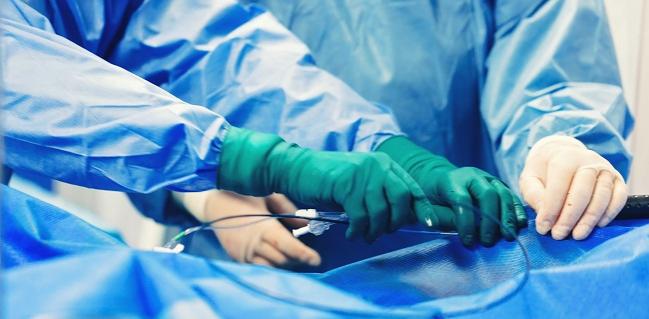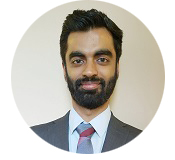Pursuing Training in Structural Heart Interventions: Q&A With Mario Gössl, MD
What qualities should a potential structuralist possess? What should they look for in a fellowship? One expert explains.

Since the first in-human TAVR in 2002, the field of structural heart interventions has evolved tremendously. With an aging population and a growing number of adults living with congenital heart disease, percutaneous therapies for structural heart disease (SHD) have become an important alternative.
There are currently 39 centers in the United States offering training in SHD interventions listed on the Society for Cardiovascular Angiography and Interventions (SCAI) website. However, as none of these programs are yet accredited by the Accreditation Council for Graduate Medical Education (ACGME), there exists considerable variability in training, exposure, and curriculum for trainees, a conundrum that has been previously highlighted on the Fellow Talk blog here and here. Further, for young trainees with structural training, finding ideal jobs where they can utilize their entire spectrum of newly acquired skills can be a challenge.
Despite these hurdles, the field of structural interventions is exciting and evolving, and trainees passionate about being a part of this movement should not be dissuaded from pursuing extra training. In fact, I plan on applying for a structural heart fellowship after completing my interventional cardiology training because, to me, this is the next frontier of our field.
In an effort to clarify the priorities a fellow should have when applying for a structural fellowship, I spoke with my future interventional cardiology program director, Mario Gössl, MD, PhD (Minneapolis Heart Institute), who also directs the structural heart interventions fellowship program. Dr. Gössl worked at the University of Duisburg-Essen, Germany, prior to moving the United States, where he also completed his training in internal medicine and cardiology. He trained in interventional cardiology and structural heart disease interventions at the Mayo Clinic (Rochester, MN).
Yashasvi Chugh (YC): What originally sparked your interest in structural heart interventions, and what has kept you active in the field?
Mario Gössl (MG): For me it was probably a coincidence. I have always had a combined interest in both interventional cardiology and cardiovascular imaging. Programs usually want fellows to focus on one or the other, but I was lucky enough to be able to do both and obtain Level III training in echocardiography prior to my interventional cardiology fellowship. While doing transesophageal echocardiography (TEE) in the cardiac catheterization lab during my training at the Mayo Clinic, I was exposed to many TAVRs, which were just beginning to gain popularity, and many other structural interventions. I found this up-and-coming field combined both my passions, and this is what led me to become a structural heart interventionalist. There is constant growth, innovation, and evolution in the field, and it never gets boring.
YC: What key skills should trainees harbor during their general and interventional cardiology fellowships in order to prepare for a structural fellowship?
MG: Gaining access! It is very important for trainees to have expertise in femoral access, especially since coronary interventions are moving more toward transradial access and some newer trainees don’t always attain expertise in both. Other skills that are needed for structural interventions will come naturally during your interventional cardiology training, such as wiring and negotiating catheters.
Another important skill to have would be the ability to do a safe, goal-directed transeptal procedure, either using TEE or intracardiac echocardiography guidance. My mentors taught these basic skills in training blocks: first train in access, next train to enter your area of interest (whether it is the left atrium or crossing the aortic valve), and the rest will be taught to you in your structural fellowship.
Trainees must remember not to forget the basics. Don’t be focused on just putting in a stent, rather focus on the steps that led you to your point of interest.
YC: How much training in cardiac imaging should someone aim for during their general cardiology fellowship?
MG: I would recommend gaining experience in interventional echocardiography and TEE—getting familiar with the views and interpreting 3-D images—as these help guide us during our structural interventions. In terms of cardiac CT experience, it is difficult to obtain a broad skill set without committing dedicated time to a different fellowship. I was able to train myself by sitting with the expert cardiac CT readers in my free time to learn aspects of this imaging modality that were important for me, including doing basic measurements pertaining to TAVR valve sizing and vascular access measurements. Keep in mind, however, that it’s hard to be an expert in everything.
YC: What skills are crucial to learn during a year of structural heart disease training?
MG: During this year, fellows should focus on gaining expertise in the currently available technologies, developing basic skills such as crossing an aortic valve, and learning how to deploy transcatheter valves for aortic interventions. For mitral interventions, obtaining a goal-oriented transseptal puncture is crucial. With the current growth in the field, new therapies and valves will keep emerging in the future, and it will be impossible for everyone to have trained in all of them. So stick to your basics. Other skills will come during the dedicated training year, such as closing patent foramen ovale/atrial septal defects or working on paravalvular leaks, which both have a slightly easier learning curve once TAVR and mitral procedures are mastered.
YC: Many interventional cardiology fellows are dissuaded from pursuing further training in structural heart disease due to a very competitive job market. What advice do you have for them?
MG: I want to share some great advice from my mentors in Germany and the Mayo Clinic. Pursue whatever makes you happy! Pursue your interests! If you are engaged in and passionate about the field, then you will be a good operator and physician.
It’s hard to predict the job market, so I would not get disappointed. You may need to be flexible though during your job search. You may end up initially choosing a job where structural interventions are only a minor portion of your practice. You also should remain open-minded to changing jobs along the line in case something more ideal comes about. But always pursue your passion.
YC: What are some important aspects of a good SHD training program and how should prospective fellows go about evaluating programs in which to apply? Are there any specific questions you would encourage fellows to ask during their interviews?
MG: If I were to evaluate a program I would look first at the academic output of the department and its structural interventionalists. Most fellows are still early in their career and are building up their experience, and this fellowship year should allow them to be part of research projects along with their exposure to procedures in the cath lab. In terms of procedural volumes, an ideal program would be one that does at least 200 TAVRs and 50-100 MitraClips a year. These are bread-and-butter cases, so it is very important to get well trained in these. The other procedures are easier to pick up once fellows become comfortable with these two. Also, it is important for trainees to talk to fellows in programs where they interview, mostly to ask about autonomy. At least in the last 2-3 months of your training year, you should be allowed to do procedures as a primary operator. This will help foster confidence and prepare you for a job after graduation.
YC: Since most trainees applying for structural fellowship are fresh out of their interventional cardiology training, what should they do to keep their coronary skills fresh while learning new structural skills?
MG: We include our fellows in the on-call pool for STEMIs and always encourage them to go into coronary cases if there is room in the lab. I ask my fellows to consider whether 8 months into their training it is more important to have TAVR number 168 or to get warm again with their coronary skills.
YC: What effect would it have on the field if structural heart fellowships were accredited by the ACGME? Would you like to see this happen?
MG: I think it would make things a bit complicated. There would be another board certification, test, and expense to be incurred, and this will make it harder for structural interventionalists to stay current with all of their board certifications. I don’t think it is necessary, but I will go with the flow. Overall this is a skill set that you need to acquire with a dedicated year of training whether with or without ACGME accreditation. I think if you go to a job with on-the-job training in structural interventions, it won’t do you justice.
YC: Where do you see the future of structural interventions going? What would you most like to see change down the line?
MG: I think sometime in the future, hospitals and healthcare systems will have to decide if they want dedicated structural interventionalists. With a growing volume of patients with valvular heart disease and structural procedures, we will probably need dedicated coronary and structural interventionalists. It will be a challenge for operators to keep up all their skills, but I think this transition with eventually happen.
Ultimately, I would like to see that we deliver care to everyone. There is still a big disparity in the delivery of transcatheter valve therapies—the majority of patients that receive the newest structural therapies are white and this doesn’t reflect our population at all. In order for change to happen, costs of these therapies will have to come down. I hope the industry and insurance providers can come together to make this an affordable and accessible solution.
YC: Last one, just for fun. How do you like to spend your free time in between your hours in the cath lab?
MG: If I have no paperwork or administrative duties, I like to do yoga in between my cases. This helps strengthen my core since I am wearing a lead all day. At home, I have two German Shorthaired dogs that I like to spend time with, and in my free time I like to go bird hunting, kayak on the lake, and attend the theater. Also, I love cars!
2018-2019 Fellow Talk Blogger
Yashasvi is a second-year general cardiology fellow at Mount Sinai St Luke's and West Hospitals (New…
Read Full BioDisclosures
- Gössl reports serving on the speaker’s bureau for Abbott Vascular and as a consultant to Abbott Vascular and Livanova.


Comments